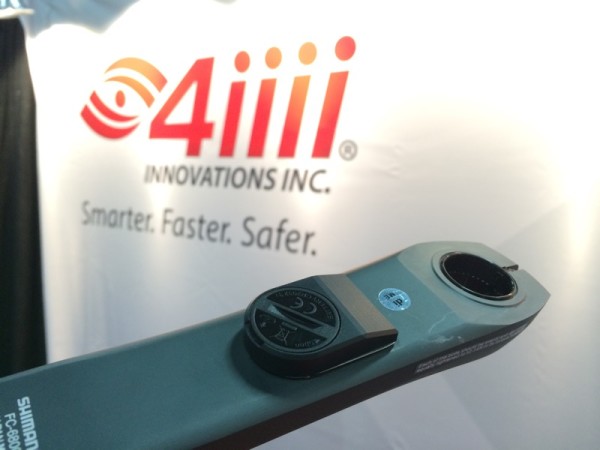4iiii has dropped the cost of entry to power measurement to an all time low of just $399 while promising incredible accuracy.
Their new 4iiii Precosion Power Meter sticks onto the back of your left side crank arm, similar to Stages’ units, except it’s smaller and can be installed by the end user. It comes with a pod and calibration kit, and if you want a second pod (or third or fourth or fifth), those are $350 each. That allows you to add a second one to your crankset and get true left/right, or just add them to other bikes and use the original calibration kit. Or, if you have a bunch of friends or a friendly bike shop, you really only need one calibration kit.
Power through for more on the tech…
Inside each pod are eight strain gauge grids, but they’re wired into two systems. Those two different strain measurement systems, and they’re very different than each other in the way they measure forces. Those competing measurements are compared and contrasted by the software to end up with a more accurate reading.
You calibrate it by putting a spindle into your pedal hole on the crank. It has a a spindle with grooves and a hook, then you simply hang anything on it that’s more than 10 pounds. Put the cranks horizontally, hold the rear brake and the load cell in the spindle tells the pod how much weight is being placed on the system, then it calibrates itself. The accelerometer in the pod knows if it’s level enough to calibrate, otherwise it’ll reject it and you try again. A warning of the calibration settings will show up on their smartphone app or common cycling computers.
Once it’s set up, it transmits by ANT+ and Bluetooth LE simultaneously. They’re using a Nordic chip, so when BT 4.1 comes online, it’ll be a simple over the air update. In fact, all updates for the system will be over the air through their app. That update to the newer BT standard will allow it to transmit to multiple Bluetooth devices at once.
The pod itself sticks to the crank arm with a two-part epoxy. It comes with a template guide to help get it lined up and properly aligned. They say it only takes about 10-15 minutes to install and then a six hour cure time. It weighs just 10g with the battery.
It runs on a standard 2032 coin cell battery for 200 hours. It’ll be available by the end of the year. Final production units will be just a bit shorter and thinner than these, and they should fit well between Shimano’s new 4-arm cranks and the chainrings and many other models, too.


